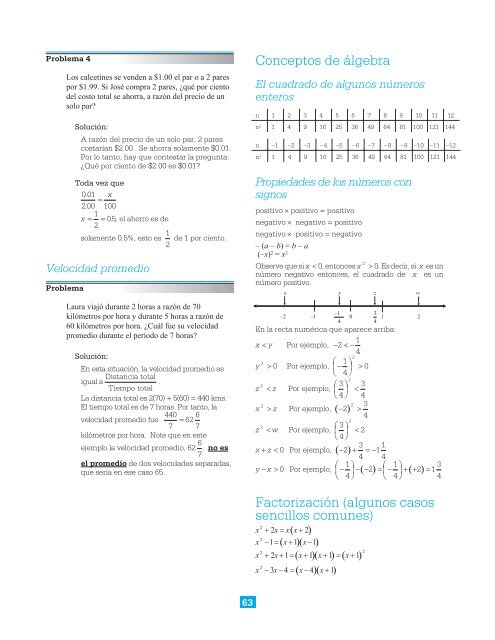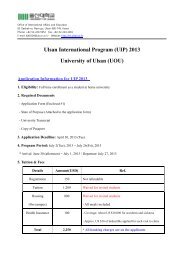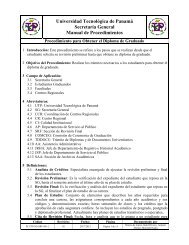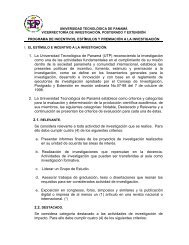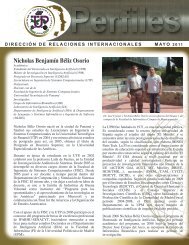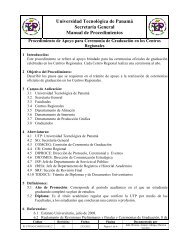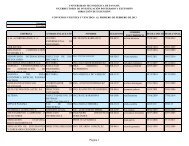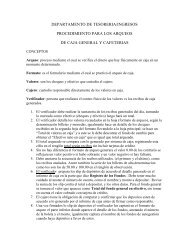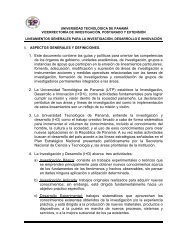Guía de estudios PAA - Universidad Tecnológica de Panamá
Guía de estudios PAA - Universidad Tecnológica de Panamá
Guía de estudios PAA - Universidad Tecnológica de Panamá
You also want an ePaper? Increase the reach of your titles
YUMPU automatically turns print PDFs into web optimized ePapers that Google loves.
Problema 4<br />
Los calcetines se ven<strong>de</strong>n a $1.00 el par oa2pares<br />
por $1.99. Si José compra 2 pares, ¿qué por ciento<br />
<strong>de</strong>l costo total se ahorra, a razón <strong>de</strong>l precio <strong>de</strong> un<br />
solo par?<br />
Solución:<br />
A razón <strong>de</strong>l precio <strong>de</strong> un solo par, 2 pares<br />
costarían $2.00. Se ahorra solamente $0.01.<br />
Por lo tanto, hay que contestar la pregunta:<br />
¿Qué por ciento <strong>de</strong> $2.00 es $0.01?<br />
Toda vez que<br />
001 .<br />
<br />
2. 00 100<br />
x<br />
1<br />
x 05<br />
. , el ahorro es <strong>de</strong><br />
2<br />
solamente 0.5%, esto es 1<br />
2<br />
Velocidad promedio<br />
Problema<br />
<strong>de</strong> 1 por ciento.<br />
Laura viajó durante 2 horas a razón <strong>de</strong> 70<br />
kilómetros por hora y durante 5 horas a razón <strong>de</strong><br />
60 kilómetros por hora. ¿Cuál fue su velocidad<br />
promedio durante el período <strong>de</strong> 7 horas?<br />
Solución:<br />
En esta situación, la velocidad promedio es<br />
Distancia total<br />
igual a .<br />
Tiempo total<br />
La distancia total es 2(70) + 5(60) = 440 kms.<br />
El tiempo total es <strong>de</strong> 7 horas. Por tanto, la<br />
velocidad promedio fue 440<br />
62<br />
7<br />
6<br />
<br />
7<br />
kilómetros por hora. Note que en este<br />
ejemplo la velocidad promedio, 62 6<br />
, no es<br />
7<br />
el promedio <strong>de</strong> dos velocida<strong>de</strong>s separadas,<br />
que sería en ese caso 65.<br />
63<br />
Conceptos <strong>de</strong> álgebra<br />
El cuadrado <strong>de</strong> algunos números<br />
enteros<br />
n 1 2 3 4 5 6 7 8 9 10 11 12<br />
n 2 1 4 9 16 25 36 49 64 81 100 121 144<br />
n –1 –2 –3 –4 –5 –6 –7 –8 –9 –10 –11 –12<br />
n 2 1 4 9 16 25 36 49 64 81 100 121 144<br />
Propieda<strong>de</strong>s <strong>de</strong> los números con<br />
signos<br />
positivo positivo = positivo<br />
negativo negativo = positivo<br />
negativo positivo = negativo<br />
–(a – b) =b – a<br />
(–x) 2 = x2 Observe que si x 0, entonces x 2<br />
0.<br />
Es <strong>de</strong>cir, si x es un<br />
número negativo entonces, el cuadrado <strong>de</strong><br />
número positivo.<br />
x es un<br />
En la recta numérica que aparece arriba:<br />
x y<br />
1<br />
Por ejemplo, 2 4<br />
y 2<br />
0 Por ejemplo, <br />
<br />
2<br />
1 <br />
0<br />
4 <br />
2<br />
z z<br />
2<br />
x z<br />
2<br />
3 3<br />
Por ejemplo, <br />
4 4<br />
2 3<br />
Por ejemplo, 2 <br />
4<br />
2<br />
2 3 <br />
z w Por ejemplo, 2<br />
4 <br />
3<br />
x z 0Por ejemplo, 2 1<br />
4<br />
1<br />
4<br />
<br />
y x 0Por ejemplo, <br />
<br />
<br />
1<br />
1 <br />
2 2 1<br />
4 4 <br />
3<br />
4<br />
Factorización (algunos casos<br />
sencillos comunes)<br />
<br />
<br />
<br />
<br />
2<br />
x 2xx x2<br />
x y z w<br />
–2 -1<br />
2<br />
x 1 x1 x1<br />
2<br />
x 2x1 x1 x1 x1<br />
2<br />
x 3x4 x4 x1<br />
–1<br />
4<br />
0<br />
2<br />
3<br />
4<br />
1 2


